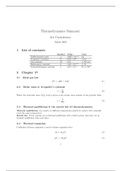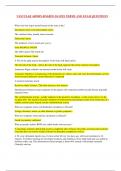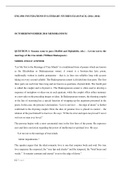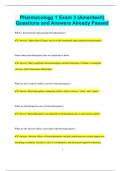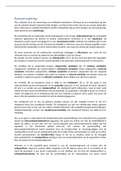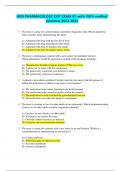Samenvatting
Physics I: Thermodynamics Summary chapters 17, 18, 19 and 20, 14, 15
- Instelling
- Technische Universiteit Delft (TU Delft)
A compact summary of the course content & all relevant formulas with explanations. Chapters 17, 18, 19 for the first exam of the course; and chapters 20, 14, 15 for the second exam of the course. TU Delft BSc Aerospace Engineering Year 1, Q3. Based on book Physics for Scientists and Engineers, Gian...
[Meer zien]
